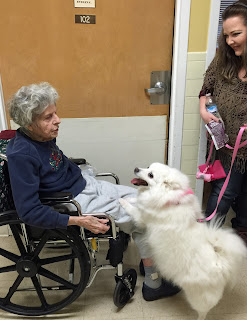The mission of St. Jude Children’s Research Hospital,
according to their website, is to advance cures and means of prevention for
pediatric catastrophic diseases through research and treatment. No child is ever denied treatment based on
race, religion, or a family’s ability to pay.
Unlike any other hospital, the majority of St. Jude’s funding comes from
individual contributions. Because of
this, families of patients never receive a bill from this hospital. St. Jude is leading the way the world
understands, treats and defeats childhood cancers and other life-threatening
diseases.
I recently learned about St. Jude’s need for platelet
donors for their patients. Platelets are
small blood components that help the clotting process by sticking to the lining
of blood vessels. They are made in the
bone marrow and survive in the circulatory system. Patients suffering from diseases such as leukemia,
as well as patients who are undergoing treatments like chemotherapy usually
have a decreased platelet count. If the
number of platelets in a patient’s blood becomes too low, spontaneous bleeding
can occur. Even a small amount of
bleeding can be dangerous, particularly if it occurs in the brain. In other words, without platelet
transfusions, many lives would be lost.
A patient whose treatment involves a bone marrow
transplant will typically require 120 units of platelets during the course of
their treatment. It costs St. Jude
between $500 - $700 to purchase just one unit of platelets from an outside
provider. Each month, St. Jude performs
approximately 800 blood and platelet transfusions. It is because of this that the need for
platelet donations is great. And it is
because of this that Michael and I decided to donate our platelets to this very
worthy cause.
Random Act of Kindness # 17:
March 18, 2016
March 18, 2016
The process starts with a short interview. If you’ve ever given blood, you know what I’m
talking about. This is where they ask
you what drugs you’re currently taking, ask you the standard questions that
would help them to determine whether your blood is safe to use, and check your
iron levels, blood pressure, etc. A
woman named Katherine conducted my interview and she kept me laughing the whole
time. She really helped to put me at
ease. Once the interview is over, off
you go to the donation room.
Now, the nurses in the donation room want you to be as
comfy as possible. After all, you’re working
together to save lives. So, you’re
provided a comfy chair, nice warm blankets, snacks, your own personal TV with
remote, and a nice selection of movies to help you pass the time. This is much appreciated since a platelet
donation can take up to 2 hours.
I must praise my nurse, Lisa. I have horrible veins, you see. Lab technicians typically hate drawing blood
from me. My veins are rollers and
blowers, and it turns out that this is not ideal for a platelet donor. Platelets are collected by first drawing
whole blood from a donor. The blood is
then separated into red blood cells, plasma and platelets inside a machine by
using centrifugation. The platelets are retained while the machine returns
the red blood cells and plasma back to the donor. It is this return that can be a little hard
on the vein. Fortunately, Lisa wouldn’t
give up on me. She searched and searched
both arms before finding a vein she thought would be appropriate. And, she only had to stick me one time! She was very attentive throughout the process
and did her best to make sure I was comfortable at all times.
Overall, my experience was great! The staff was pleasant (they didn't even balk when I asked to take a picture with them for my blog) and the donation process was
pretty much painless. If you are able, I
highly recommend donating blood and/or platelets to St. Jude. You never know the difference it could make
in the life of a very special little one.
A big thank you to my husband for hanging out with me and
keeping me company during the 2 hours process, even though he was unable to
donate due to some current medication he is on.
And another big thank you to my brother for making me aware of this
giving opportunity in the first place.


















